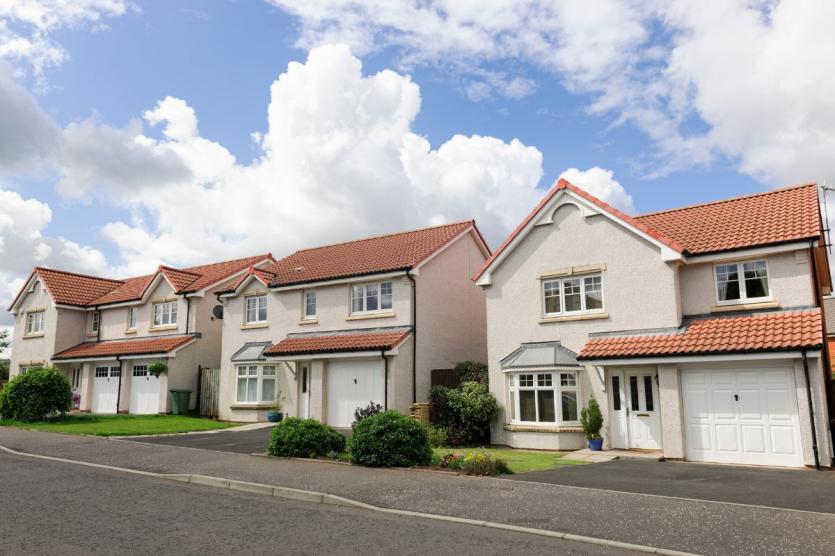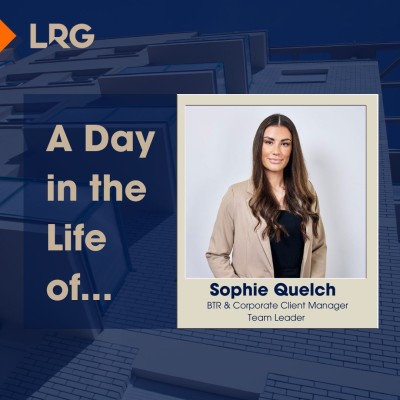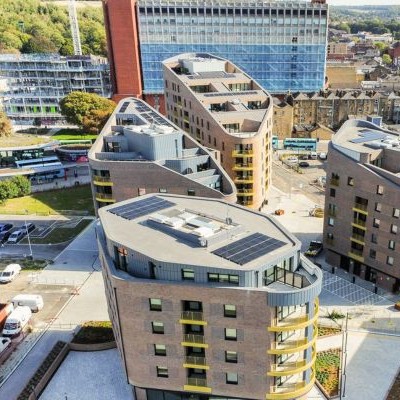Can Traditional BTR Learn from the Successes of Suburban BTR?

We frequently read about how the traditional form of urban BTR has inspired the more recent model, suburban BTR. Our own white paper BTR suburban communities: the next stage in the evolution of Build to Rent draws comparisons between the two in describing the rapid trajectory of this increasingly poplar asset.
However, as suburban BTR achieves success up and down the country, it is interesting to consider whether this relatively new suburban iteration has, in turn, inspired change in the original model: how is city centre apartment living changing as a result of the success of suburban schemes?
Regional growth
In the early days of BTR, roughly a decade ago, the vast majority of schemes were in London, followed by Manchester, Liverpool and Birmingham. But activity in the capital has now been surpassed by regional growth. In June 2023, the BPF’s Build to Rent Hub shows that there are now 242,548 build-to-rent homes in the UK, of which 91,272 are in London and 151,276 outside London.
Despite some challenges in the property industry at large (mainly as a result of increased mortgage rates), the picture remains positive for BTR. Handelsbanken’s professional landlord survey, published in May, shows that large portfolio professional landlords are in a confident mood, with 59% planning to acquire at least one new asset in the coming year. No fewer than 92% expect the value of their portfolio to increase over the next year. Furthermore, research by JLL shows that investment in single-family rental neared £600m in the first quarter of 2023, topping the total for 2022, and that the sector accounted for more than a quarter of all living investment at the start of the year.
Changing demographics
Growth in the rental market – urban or suburban – has resulted from an increased number of families choosing to rent. According to The Suburban BTR Housing Report, 60% of privately rented properties in the UK are houses and an estimated 1.8 million families with children live in rented accommodation. The scale of the opportunity for institutional investors to deliver and manage suitable housing options for these households is substantial.
This is compounded by supply and demand issues in the private rented sector (PRS). As a result of the tax and regulatory burdens affecting private landlords, the number of properties available to rent has fallen considerably. The PRS is failing to meet demand following the withdrawal of thousands of amateur landlords from the market, and this number is expected to increase following the proposals contained within the recently published Renters’ Reform Bill. Propertymark reports that each rental property has an average of 16 prospective tenants and that the mismatch between supply and demand has risen 35 per cent since April 2022.
According to the English Housing Survey 2022, the number of households renting privately has increased by 93% in the last 15 years, while the number of owner-occupied households has grown by just 3%. The increased number renting is not solely linked to mortgage rates or the economy, but is part of a longer term trend which also responds to the preference among younger generations for more flexibility. The same survey shows a new tenant demographic emerging: the numbers of renting households with dependent children has doubled since 2003/4, making up 30% of the sector and the number of ‘comfortable renters’ (middle-class and well-off) is expanding too, representing 44% of the rental sector.
Assimilating suburban qualities of space in urban schemes
The relative values of urban or suburban BTR are inevitably influenced by counter-urbanisation, a trend which was predominant at the height of the pandemic because of the potential for space (especially outside space) that suburban living offers. Research for Knight Frank’s 2021 Suburban BTR Housing Report found that 57% residents said that having a garden or access to nearby green space was more important to them than it was pre-pandemic, 41% said their experience from lockdown meant they were looking for a larger property and 57% now sought a dedicated space to work.
The challenge to developers of city centre BTR schemes is to replicate these benefits where possible. This is particularly relevant given that in reality, it would appear that the long-term impact of ‘counter-urbanisation’ has been over-exaggerated.
Providing for a broader demographic
The 25-34 age group remains the largest within the BTR sector in London, but BTR also houses a higher percentage of residents aged 55-64 (5% compared to 3% for the PRS according to Business LDN’s Who Lives in BTR? report) and, as rising house prices disproportionately impact on those living in cities, an increasing number of families are living in BTR properties in the cities.
This is another area in which urban BTR can learn from suburban BTR: a more family-focused scheme will invariably attract this growing market. Developments may be better positioned to provide suitable services – such as a means of delivering childcare, the scheme’s ‘library of things’ adapted to provide equipment relevant to babies and children, or shared facilities adapted to incorporate playgrounds or indoor soft play.
Without more homes suitable for children, London’s demographic will age, bringing with it a host of issues – not only a lack of vitality but a growing dearth of key workers necessary to support them.
Already central London’s primary schools are closing at an unprecedented rate due to a lack of demand and a lack of accessible, affordable, secure housing is a direct contributing factor - whether that is because younger people, who are looking to start families are responding to cost of living and housing pressures by moving out of cities to more affordable areas, delaying when they have children, reducing their overall family size or deciding not to have children. There is a clear correlation between house prices and fertility rates: a 10% increase in house price equals a 1.3% decrease in births. There is also a correlation between where people live and birth rates, with fertility rates being lower in large urban areas, and higher in suburban and rural areas.
BTR suburban communities appeal to families because they create safe neighbourhoods in locations with in-demand factors associated with new families, such as proximity to employment, desirable schools, and transport infrastructure to provide easy access to these areas. Thousands of families are drawn to BTR suburban communities because it is safe for children can play outside and walk to school.
This is achievable in London too. The new Ark Soane Academy in the Gunnersbury Lane regeneration zone in London was initially an innovative joint venture between DfE and LocatED. The project produced a 1,200 place free school and sixth form as part of a mixed-use development which included 116 new homes. The secondary school occupies the lower three levels of the building and above the school are three 10 storey residential blocks. This project was the first major mixed-use, education-led scheme in Ealing and is the first time that residential development has been positioned above a school in a seamlessly integrated arrangement within the borough. Through the reimagining of this once disconnected site, the local community has gained a significant asset that embraces the future of connected city living.
The last census (2021) revealed that 18.6% of the UK population was aged 65 or over, and this is projected to increase to 24% by 2043. If property prices continue to inadvertently suppress birth rates, then this demographic shift in urban areas will become more pronounced.
Therefore partnerships with local authorities, social care, education and leisure facilities all have real potential for the BTR sector, enabling the creation of a community in a wider scale than has been done previously – both young and old. Joint ventures which enable BTR to cross-subsidise other property assets can deliver bespoke schemes, ideally suited to a specific location and its unique needs.
Another potential for increasing to the appeal for both young and old would be to allow BTR to include pets. Business LDN’s recently published analysis of Build-to-Rent occupancy in London states that 53% of London BTR schemes welcome pets. This is set to increase, as the Renters’ Reform Bill aims to ensure all landlords consider tenant requests to have a pet in their home, with the tenant able to challenge unfair decisions.
Tech and co-working
BTR suburban communities grew partially out of an opportunity for people to work from home more and commute less, and urban schemes are not immune from this substantial revolution which necessitates both a dedicated workspace and a resilient internet connection.
Providing top quality technology was initially a challenge for the operators of BTR suburban communities due to the physical spaces between individual units and the lack of a single reception area and notification system. But recent innovations have surmounted this issue, with apps such as Strike Living providing a social and community service with interacts with existing technology to create efficiencies and an excellent customer service.
Furthermore, technology such as this, along with effective tools for monitoring and reporting, are enabling developers to forecast risk with increased accuracy.
Co-working spaces, together with facilities for networking, meetings and teleconferences of the type already provided in many suburban BTR schemes, have the potential to appeal to those who might otherwise choose to leave the city for the benefit of a spare bedroom in which to work.
ESG
From its inception, BTR has prioritised ESG goals, and these principles were carried forward into BTR suburban communities. There is no doubt that the appeal of BTR suburban communities to both residents and investors is partly due to its ability to address the ESG goals. From social responsibility, in part delivered through cohesive communities which embed a sense of neighbourliness; to environmental responsibility (through everything from modern methods of construction to effective recycling, biodiversity and energy efficiency policies), suburban BTR has taken an enlightened approach which could be very effectively adopted by its urban counterparts. Following the Renters’ Reform Bill it is anticipated that the PRS will be increasing dominated by large landowners and with those including the Church Commissioners and John Lewis investing in such schemes, ESG will invariably rise further up the agenda.
Conclusion
There is no question that the challenges in transferring the values of urban BTR to suburban BTR has forced innovation in the sector. And now the lessons learnt can be used to reinvigorate the traditional urban BTR model.
As life returns to normal post-pandemic, counter-urbanisation is not taking hold to the extent that was initially envisaged, with many returning to the cities. City centre schemes remain and attractive proposition to many. But to continue to attract those whose needs are well-met (perhaps at a lower cost) outside of city centres - specifically families - property owners and occupiers must continue to innovate and to meet ever-changing needs from ever-expanding demographics.

Contact Us
Got a question, general enquiry or something else?
You may also like
Since we started in 1987 we have grown to one of the UK’s largest property groups, we can save you time and money by offering a range of services and expertise under one roof.



